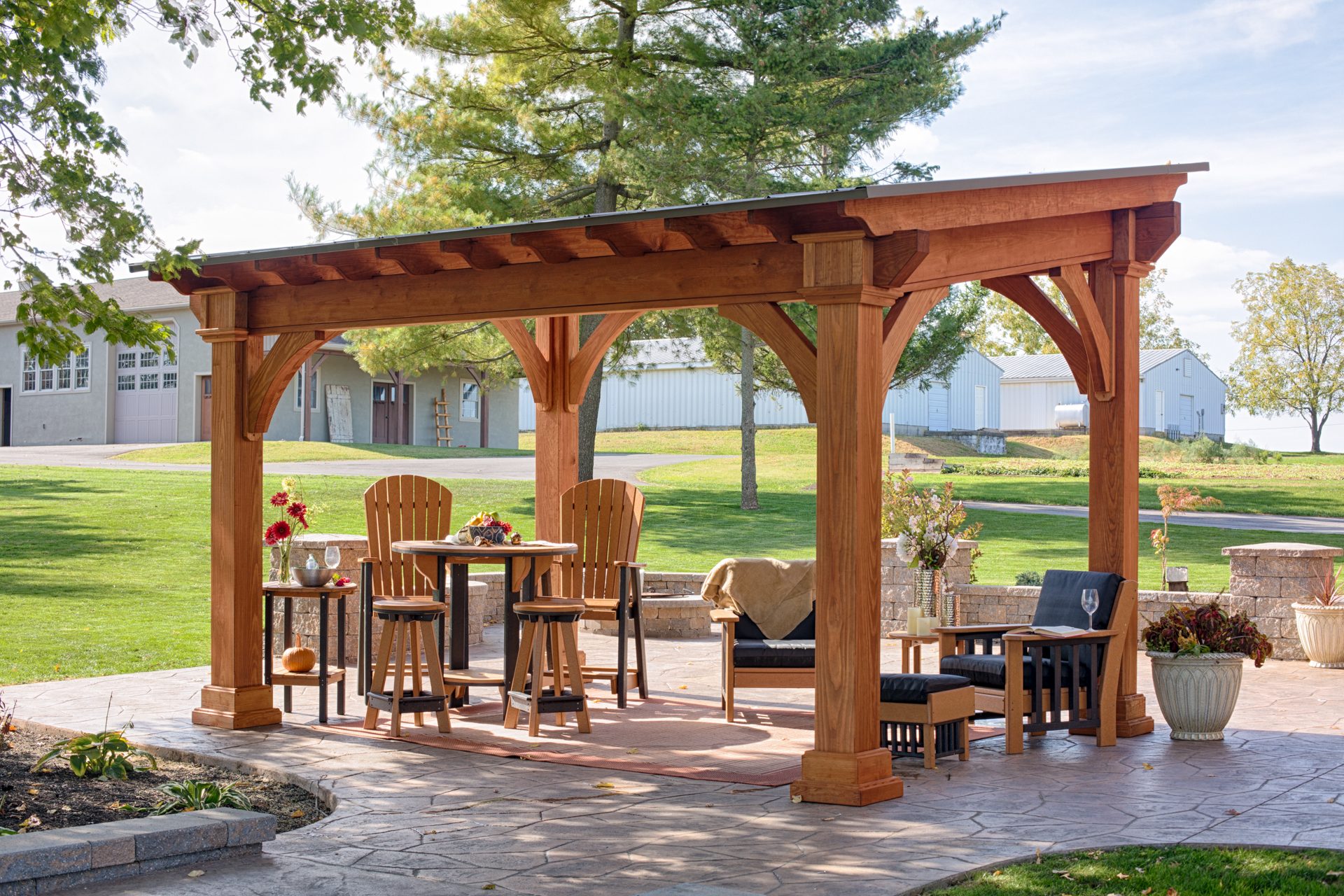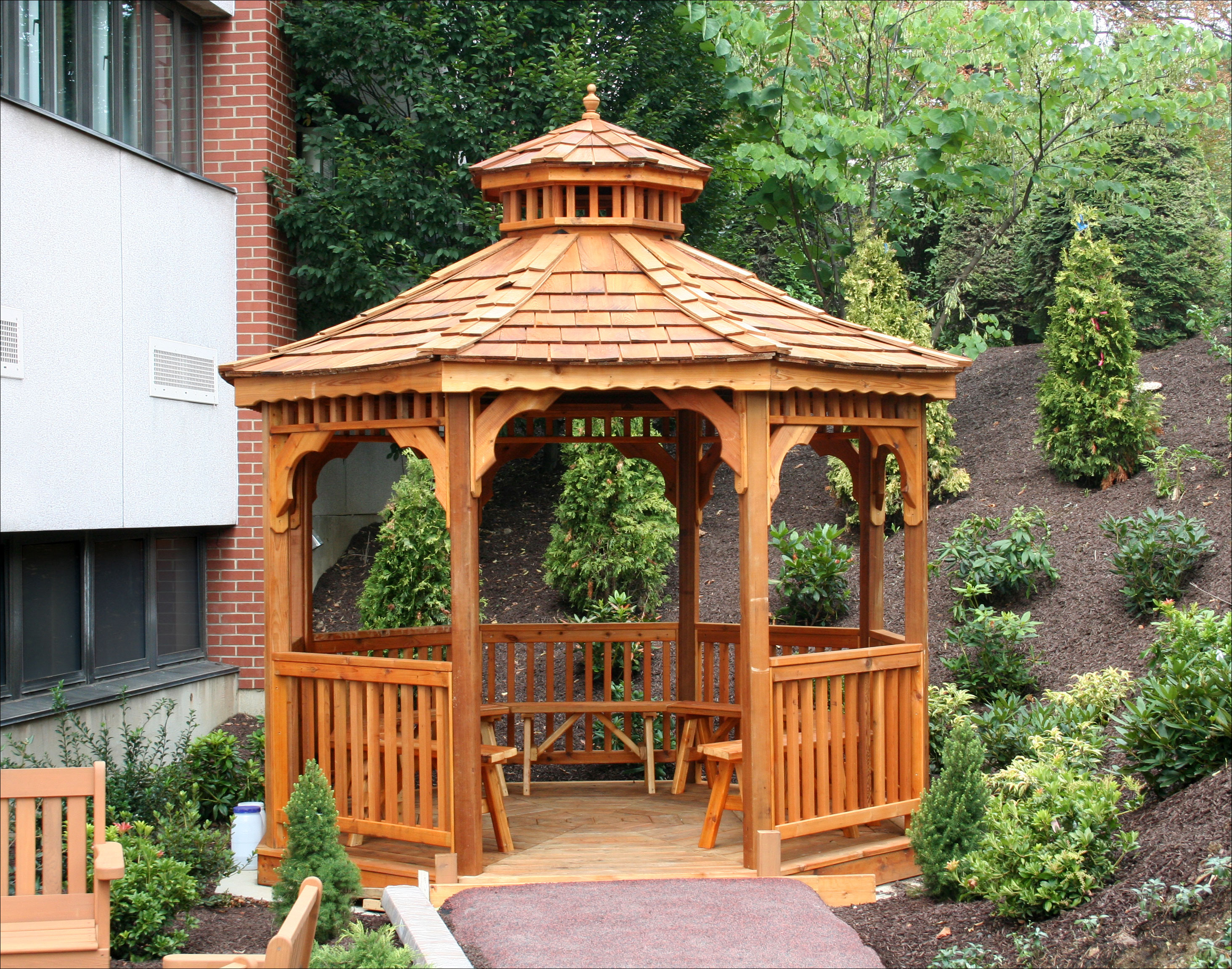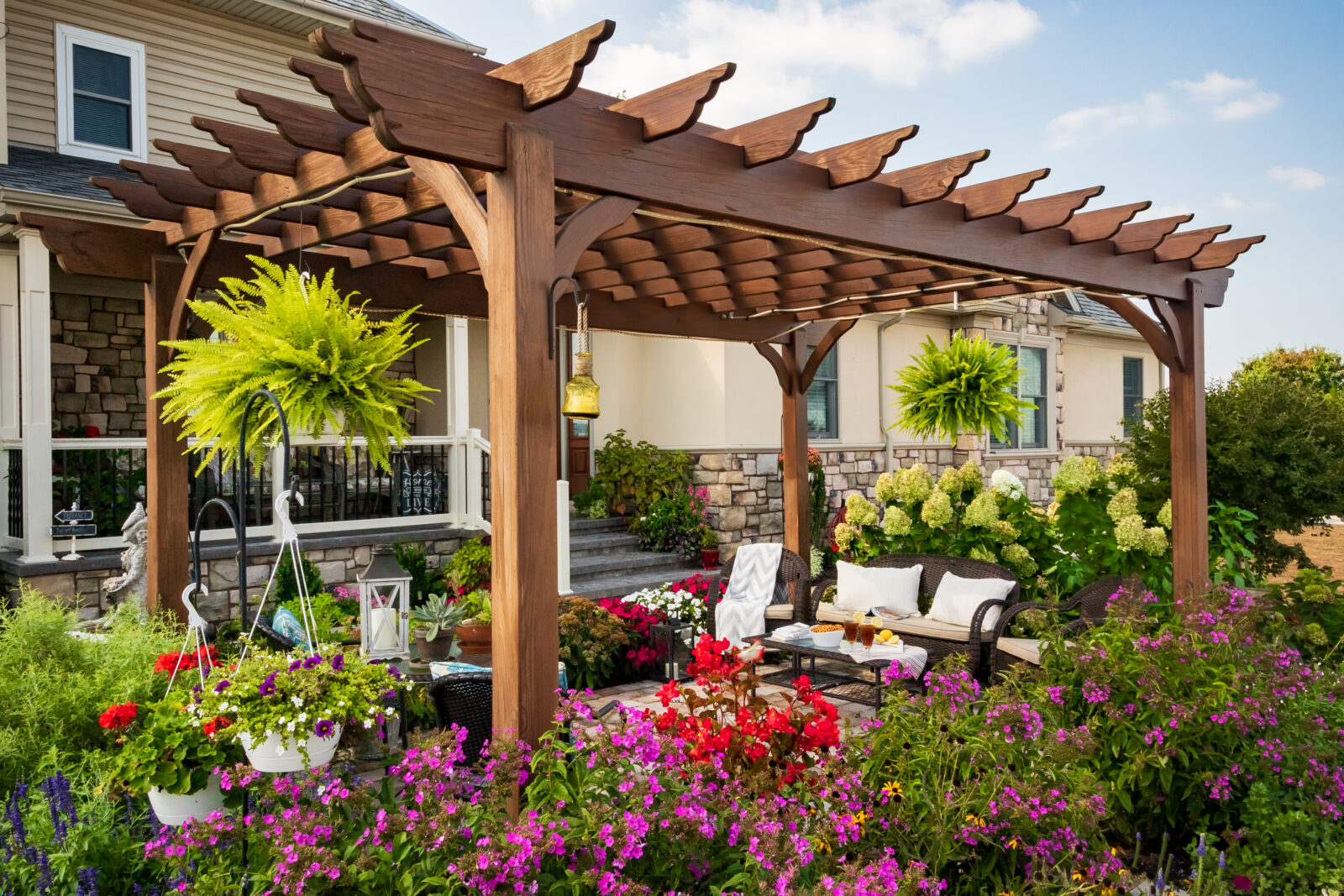In our pursuit of elegant outdoor life, Pavilion, Gazebo, and Pergola often become the three stars of creating an ideal courtyard. However, many people are not clear about the difference between the three.
Today, let's talk about the characteristics and differences of these three outdoor buildings to help you better choose the outdoor space design that suits you.
What is Pavilion?
Does the name Pavilion sound a bit classical? Yes, Pavilion is an architectural structure with a long history. Its design inspiration can be traced back to ancient times. It first appeared in the Middle East and Asia, and then gradually spread to Europe and other places, and became widely known in the 1800s.
Pavilion building structure:
A Pavilion is an open building, usually with four or more columns supporting a roof. It has no walls and is open on all sides, designed to provide an open space to shelter from the sun and rain. The roof of the Pavilion can be flat, sloping, or dome-shaped, with a variety of design styles, ranging from simple modern to gorgeous classical.
Pavilion history:
The history of the Pavilion can be traced back to ancient Egypt and ancient Greece. In these civilizations, Pavilions were often used for religious ceremonies, gatherings, and leisure activities. Over time, the use of Pavilions has gradually diversified, becoming an important landscape element in gardens, public parks, and private courtyards. In medieval Europe, Pavilions were widely used in the gardens and palaces of the nobility, becoming a symbol of status and taste.

What is a Gazebo?
Gazebo, does this name remind you of a beautiful garden or lakeside scenery? Gazebo is a romantic outdoor building that often appears in weddings, parties, and leisure occasions.
Gazebo Architectural Structure:
Gazebo is usually a circular or polygonal structure with a platform with railings and an open structure with a canopy. Its roof is usually octagonal or circular and supported by 8 symmetrical columns. Note that Pavilions are much larger than Gazebos and are ideally designed to accommodate small gatherings of 5-15 people.
Gazebo History:
The history of Gazebo can also be traced back to ancient times, but it was widely used during the European Renaissance. At that time, the Gazebo was used as a viewing platform, allowing people to enjoy the beautiful scenery, sunshine and breeze in the garden. The Gazebo gradually became an important place for social activities, symbolizing romance and elegance.

What is Pergola?
Pergola, does this name sound a bit exotic? Yes, Pergola is an outdoor building originating from Italy, full of Mediterranean style.
Pergola architectural structure:
Pergola is an open frame structure, usually supported by multiple columns, covered with beams and vines. It does not have a complete roof, but provides partial shade through beams and vines. The design of Pergola is very simple, naturally blending into the environment, suitable for courtyards and gardens of various styles.
Pergola history:
The history of Pergola can be traced back to the ancient Roman period, when they were used as passages and leisure areas in the garden. Pergola is designed to provide a semi-shaded open space where people can enjoy the natural beauty surrounded by vines. Pergola was further developed during the Italian Renaissance and became an important landscape element in villas and manors.

Pavilion Vs Gazebo Vs Pergola: What's the Difference Between them?
Now that we know the basic characteristics and historical background of Pavilion, Gazebo and Pergola, what exactly is the difference between them? Let's compare them in detail from several aspects.
Difference in structural design:
● Pavilion: The structure of the Pavilion is usually open, with a roof supported by columns, but no walls. Its design is more diverse and can be flat, pitched or dome-shaped, suitable for courtyards and gardens of various styles.
● Gazebo: Gazebo is usually circular or polygonal, with a platform with railings and an open structure with a roof. Its design is more exquisite, and the roof is usually octagonal or circular, giving it an elegant and romantic feeling.
● Pergola: Pergola is an open frame structure supported by multiple columns and covered with beams and vines. It has no complete roof, provides partial shading through vines, and has a simple and natural design.
Difference in functional use:
● Pavilion: Pavilion has a wide range of uses and can be used as a leisure area, gathering place, viewing platform, etc. It provides an open space that is shaded and rainproof, which is very suitable for family gatherings and outdoor activities.
● Gazebo: Gazebo is usually used for viewing and leisure activities, and is an important landscape element in gardens and courtyards. It often appears at weddings and parties, symbolizing romance and elegance.
● Pergola: Pergola is mainly used to provide partial shading and decorative functions, and is an important decorative element in gardens and courtyards. It creates a natural and fresh atmosphere through the surrounding of vines.
Differences in material selection:
● Pavilion: The material selection of Pavilion is very diverse, which can be wood, metal, masonry, etc. According to different design styles, different materials can be selected to create a unique Pavilion.
● Gazebo: The material of Gazebo is usually wood or metal, with exquisite design and attention to detail. It is very important to choose durable and weather-resistant materials to ensure the service life and beauty of Gazebo.
● Pergola: The material of Pergola is usually wood or metal, with a simple and natural design. Choosing anti-corrosion and insect-proof wood or weather-resistant metal can extend the service life of Pergola.
Differences in installation locations:
● Pavilion: The installation location of the Pavilion is very flexible and can be placed in any open space such as the garden, courtyard, gazebo, etc. Choose a location with a wide view and good ventilation to ensure the functionality and beauty of the Pavilion.
● Gazebo: The gazebo is usually placed in the center of the garden and courtyard to provide a viewing and leisure space. Choosing a location with plenty of sunshine and beautiful scenery can enhance the use experience of the gazebo.
● Pergola: Pergola is usually placed in the paths, passages or leisure areas of the garden, and creates a natural and fresh atmosphere through the surrounding of vines. Choosing a location suitable for planting vines can enhance the beauty and functionality of the pergola.

Summary of Pavilion Vs Gazebo Vs Pergola
Whether it is Pavilion, Gazebo or Pergola, they all have their own characteristics and charm. Choosing an outdoor building that suits you can enhance the beauty and functionality of your courtyard and garden. I hope this article can help you better understand the differences and characteristics of these three outdoor buildings, so that you can make a wise choice when creating an ideal courtyard. Whether it is the romantic Gazebo, the elegant Pavilion, or the natural Pergola, they can add a unique charm to your outdoor life.

